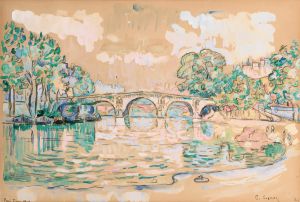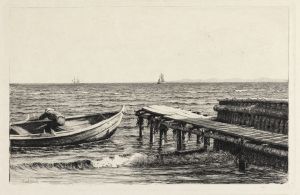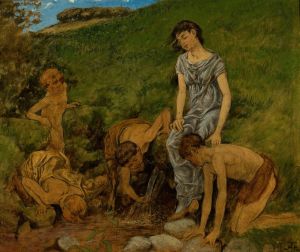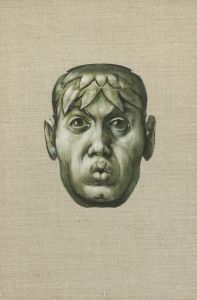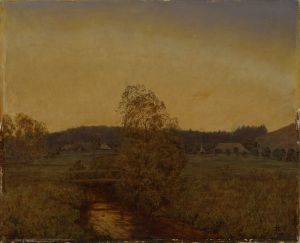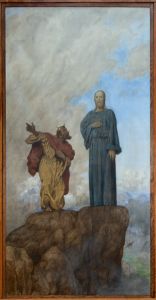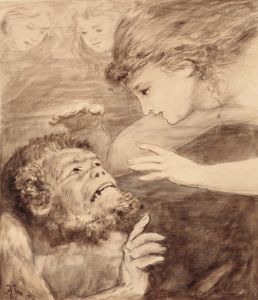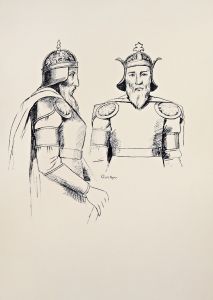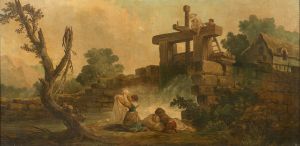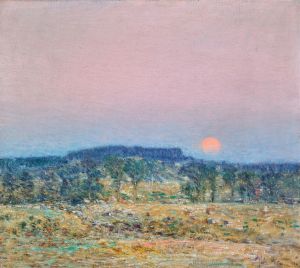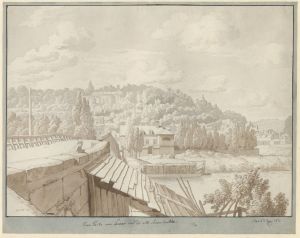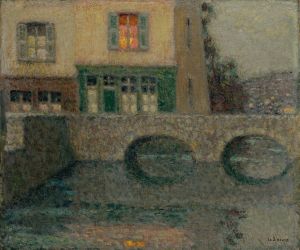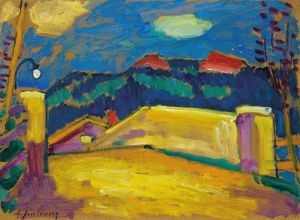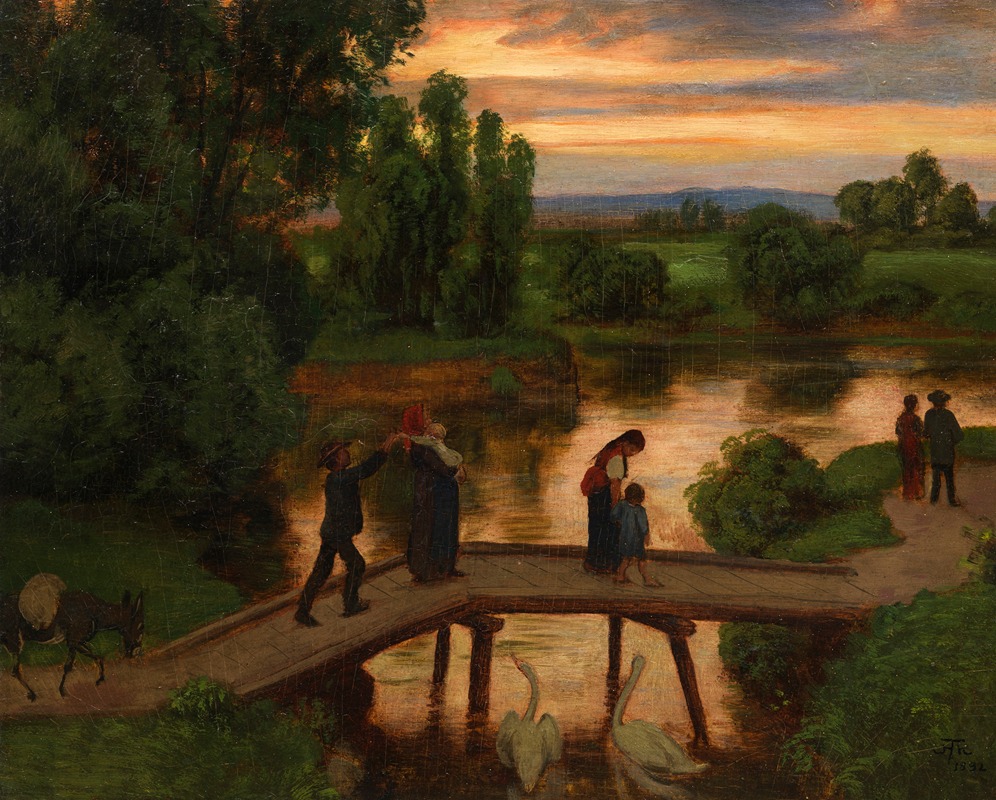
Die Brücke
A hand-painted replica of Hans Thoma’s masterpiece Die Brücke, meticulously crafted by professional artists to capture the true essence of the original. Each piece is created with museum-quality canvas and rare mineral pigments, carefully painted by experienced artists with delicate brushstrokes and rich, layered colors to perfectly recreate the texture of the original artwork. Unlike machine-printed reproductions, this hand-painted version brings the painting to life, infused with the artist’s emotions and skill in every stroke. Whether for personal collection or home decoration, it instantly elevates the artistic atmosphere of any space.
Hans Thoma was a German painter born on October 2, 1839, in Bernau, in the Black Forest region of Germany. He is known for his landscapes, portraits, and genre paintings, often imbued with a sense of romanticism and realism. Thoma's work reflects a deep connection to nature and a fascination with the idyllic and pastoral scenes of his homeland. His style is characterized by a meticulous attention to detail and a vibrant use of color, which often evokes a sense of tranquility and harmony.
"Die Brücke" (The Bridge) is one of Hans Thoma's notable works, although specific details about this particular painting are not extensively documented in art historical records. Thoma's oeuvre often includes scenes that depict the natural beauty of the German countryside, and it is likely that "Die Brücke" fits within this thematic framework. His paintings frequently feature elements such as rivers, forests, and rural life, capturing the serene and picturesque qualities of the landscape.
Thoma's artistic career was influenced by his studies at the Karlsruhe Academy of Fine Arts and his exposure to various artistic movements during his travels. He spent time in Paris, where he encountered the works of Gustave Courbet and the Barbizon School, which left a lasting impact on his approach to painting. Thoma's style, however, remained distinctively his own, blending elements of realism with a romantic sensibility.
Throughout his career, Thoma received recognition and acclaim for his contributions to the art world. He held several teaching positions, including a professorship at the Städelschule in Frankfurt, where he influenced a new generation of artists. Thoma's work was celebrated for its technical skill and its ability to evoke a deep emotional response from viewers.
In addition to his landscapes, Thoma also explored themes of mythology and folklore, often incorporating allegorical elements into his paintings. His work reflects a deep appreciation for German cultural heritage and a desire to capture the essence of the natural world.
Hans Thoma passed away on November 7, 1924, in Karlsruhe, Germany. His legacy endures through his extensive body of work, which continues to be appreciated for its beauty and its ability to transport viewers to the serene landscapes of 19th-century Germany. While specific information about "Die Brücke" is limited, it is likely that the painting embodies the qualities that define Thoma's artistic vision: a harmonious blend of nature, realism, and romanticism.





